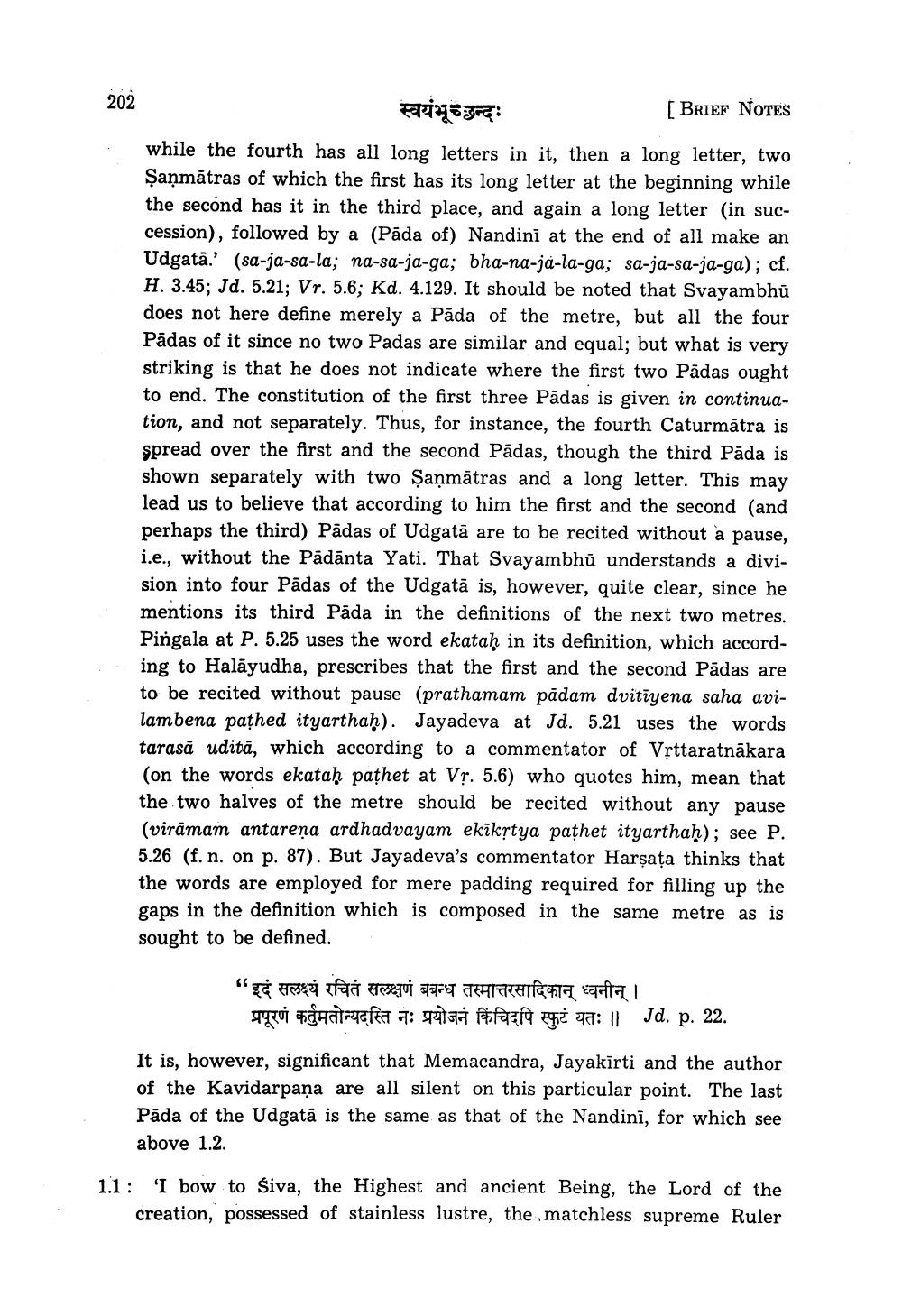________________
202
स्वयंभूच्छन्दः
BRIEF NOTES while the fourth has all long letters in it, then a long letter, two Şaņmātras of which the first has its long letter at the beginning while the second has it in the third place, and again a long letter (in succession), followed by a (Pāda of) Nandini at the end of all make an Udgatā.' (sa-ja-sa-la; na-sa-ja-ga; bha-na-ja-la-ga; sa-ja-sa-ja-ga); cf. H. 3.45; Jd. 5.21; Vr. 5.6; Kd. 4.129. It should be noted that Svayambhū does not here define merely a Pāda of the metre, but all the four Pādas of it since no two Padas are similar and equal; but what is very striking is that he does not indicate where the first two Pādas ought to end. The constitution of the first three Pādas is given in continuation, and not separately. Thus, for instance, the fourth Caturmātra is spread over the first and the second Pādas, though the third Pāda is shown separately with two Şaņmātras and a long letter. This may lead us to believe that according to him the first and the second (and perhaps the third) Pädas of Udgatā are to be recited without a pause, i.e., without the Pādānta Yati. That Svayambhū understands a division into four Pädas of the Udgatā is, however, quite clear, since he mentions its third Pada in the definitions of the next two metres. Pingala at P. 5.25 uses the word ekatah in its definition, which according to Halāyudha, prescribes that the first and the second Pādas are to be recited without pause (prathamam pādam dvitiyena saha avilambena pathed ityarthaḥ). Jayadeva at Jd. 5.21 uses the words tarasă udită, which according to a commentator of Vșttaratnākara (on the words ekataḥ pathet at V?. 5.6) who quotes him, mean that the two halves of the metre should be recited without any pause (virāmam antarena ardhadvayam ekikrtya pathet ityarthah); see P. 5.26 (f. n. on p. 87). But Jayadeva's commentator Harsaţa thinks that the words are employed for mere padding required for filling up the gaps in the definition which is composed in the same metre as is sought to be defined.
"इदं सलक्ष्यं रचितं सलक्षणं बबन्ध तस्मात्तरसादिकान् ध्वनीन् । qaroi gharafta : 7250 Palacio Euż ta: || Jd. p. 22.
It is, however, significant that Memacandra, Jayakīrti and the author of the Kavidarpaņa are all silent on this particular point. The last Pāda of the Udgatā is the same as that of the Nandini, for which see above 1.2.
11: 'I bow to Siva, the Highest and ancient Being, the Lord of the
creation, possessed of stainless lustre, the matchless supreme Ruler




